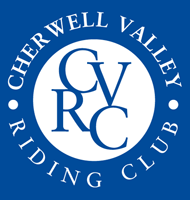Essential horse care training.....

Cherwell Valley Riding Club knows the value of learning. The team knows that it’s important for everybody to be up to date in their riding, horse care and knowledge to ensure we are all giving our horses the best life we can. So when the opportunity to run a course leading to a certificate in Essential Horse Care came up as a result of member Alison Kenward winning the course as a prize for our club, we grabbed it!
Day One – the group met at our committee member Rachel Crook’s house for the first session, where she had laid out chocolate treats for us all. The first thing we all did was go and see the beautiful foals she has! Then, down to business. Annette from BRC HQ came along to take some photos and introduce us all to the course (and kindly made us all a coffee). We all completed a short form to indicate our memberships (BHS, BRC, BD etc) and so that the tutor, Emma, could learn our names. The attendees were roughly half juniors and half seniors – the juniors being at somewhat of an advantage because they’ve been working their way through the Pony Club tests. Emma explained that we had opted for the second stage to start with, because the introductory level would have been too basic for those of us who already own and/or care for a horse. We covered various topics on the first day, some in more detail than others depending on whether the class knew the answers already.
Horse health – we discussed condition scoring in horses and the two systems available to use. We opted for the 5-stage Carroll and Huntington system where 0 is defined as emaciated and 5 obese. Rose shared photos of a horse she had rescued – that scored 0 in the first picture, and was looking amazing and a perfect 3 (good condition) by the time he found his forever home. Next up was signs of good health: pricked ears, healthy membranes, good appetite, temperature, pulse and breathing etc., followed by signs of ill-health such as loss of appetite, staring coat and changes in behaviour. Because a horse has a strong fight or flight instinct, changes in behaviour are very important. They key is simply to know your horse.
Points of a horse – we studied a chart indicating the main points of a horse, and learned what the examiner will be looking for when we are tested. We have to keep in mind that when the examiner points somewhere he is asking for the points of the horse name, not the skeletal system behind it – so if he points to the ribs, he wants to hear barrel.
Colours and markings – I was amazed at how many of the colours and markings I didn’t know. How many of you know what a feint is? Or a frosted?!
Feeding basics – here we discussed the necessities – clean water, clean feeding equipment, good quality forage and food, and feeding the right amount for the horse and its level of work. More detail is to come on this important topic.
Word games – we played “match the described behaviour to the word” on small cards. This was much harder that you would think! We all know our horses pretty well, but the aim of this game was to show us that we need to know what the examiner is actually looking for. A bit like a driving test I expect…. Let’s see! I was pleasantly surprised at how interesting and informative the evening was, and I am really looking forward to the next sessions.



